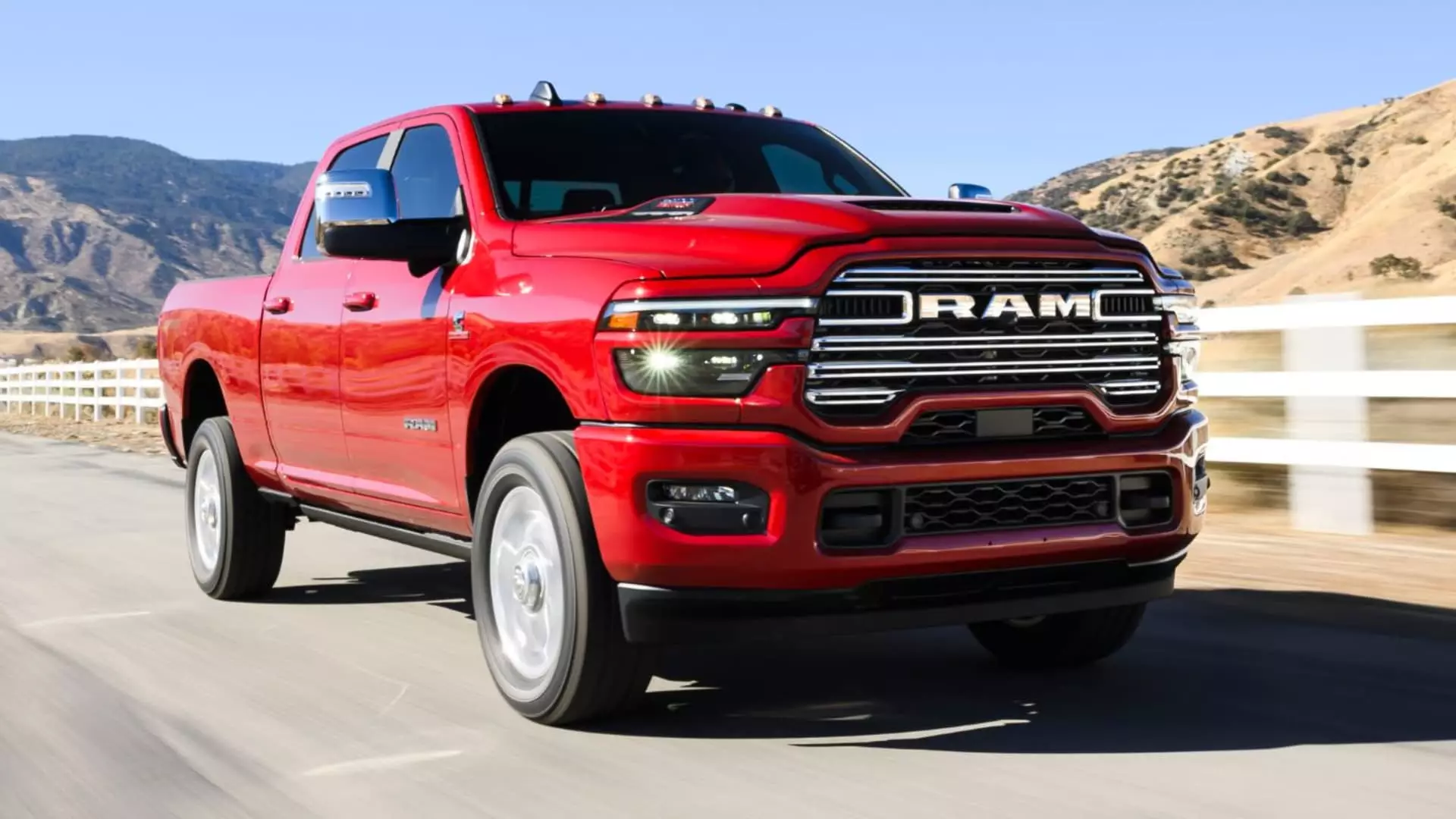Stellantis has undertaken an ambitious redesign of its Ram heavy-duty trucks, attempting to reverse the troubling trend of declining sales that has persisted for the last three years. The newly updated Ram 2500 and 3500 models, along with chassis cab versions, promise a refreshing change in both aesthetics and performance, aiming to captivate the attention of both loyal fans and potential new buyers. This revitalization comes in the wake of a significant 19% drop in sales reported in 2024, showcasing the critical need for improvements to the brand’s flagship offerings.
One of the standout features of the latest models is the introduction of a powerful new 6.7-liter Cummins turbo diesel engine, which boasts an impressive 430 horsepower and an exceptional torque output of 1,075 foot-pounds. This positions the Ram heavy-duty trucks as leaders in their class, particularly appealing to consumers who utilize these vehicles for demanding tasks such as towing and hauling. A secondary engine option is also available, featuring a 6.4-liter Hemi V-8 that generates 405 horsepower and 429 foot-pounds of torque, allowing customers to choose the powertrain that best fits their needs.
The updated heavy-duty truck lineup is set to hit dealerships in the United States during the first quarter of the year, with pricing starting around $47,560—approximately $2,300 more than their predecessors. This strategic pricing move reflects the enhancements made to the trucks while still remaining competitive in a crowded market. While Ram’s direct competitors, such as Ford and GM’s Chevrolet, have managed to maintain steady sales figures despite market fluctuations, the pressure is now on Ram to reclaim its stance in the pickup segment.
The Impact of Leadership Changes
The leadership dynamics at Stellantis also play a certain role in this revitalization effort. Ram CEO Tim Kuniskis has returned to the company after a brief retirement, bringing a sense of urgency to the brand’s operations. During a recent media event, he candidly acknowledged the delays in the rollout of the redesigned Ram 1500, attributing a portion of the sales dip to these setbacks. His frankness about the challenges faced speaks to a commitment to transparency as well as revitalization.
At its core, the success of this redesigned lineup will depend on consumer reception. Enthusiasts and practical users alike will be scrutinizing the changes in both design and functionality. Stellantis’s focus on delivering a high-performing diesel option aims to solidify relationships with long-time heavy-duty truck customers whose needs often lean towards substantial power and capability. With the myriad of models like Tradesman, Big Horn/Lone Star, Laramie, Rebel, Power Wagon, Limited Longhorn, and Limited under the heavy-duty umbrella, Ram is banking on diversity to cast a wider net.
The road ahead remains challenging; however, with strategic updates and a renewed leadership focus, Stellantis may well reclaim its footing in this highly competitive segment. The industry will be watching closely as these vehicles roll out and respond to a market that has become increasingly complex and consumer-driven.

